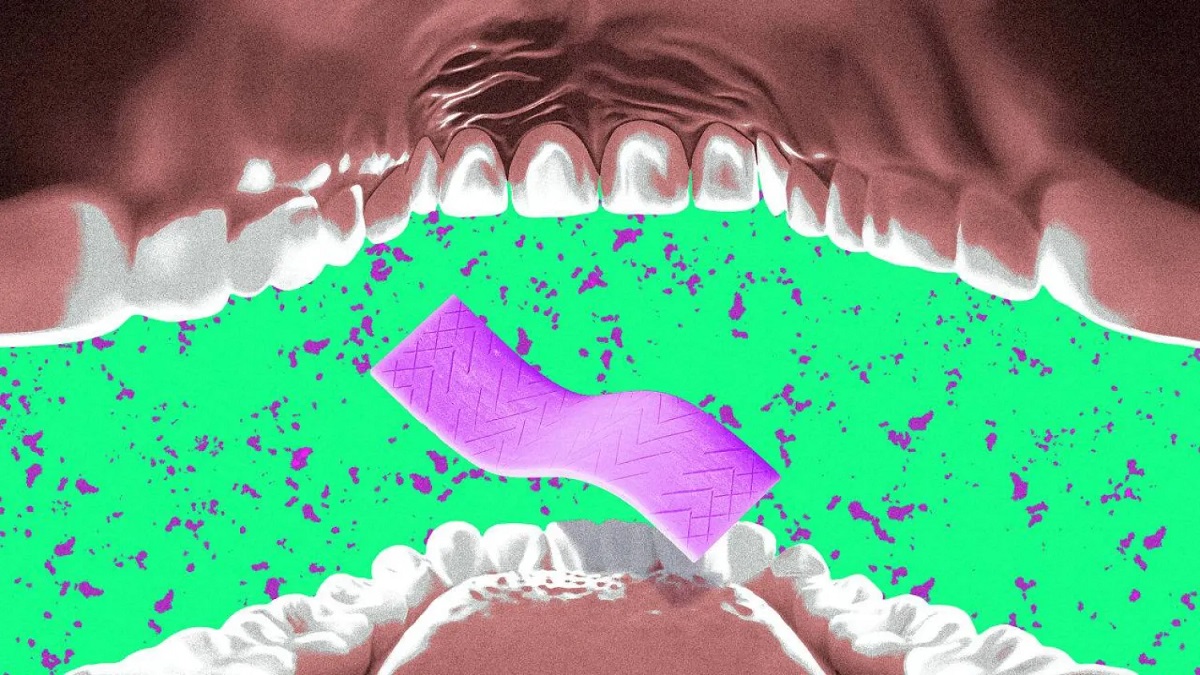Chewing Gum Exposes You to Thousands of Microplastics, Study Reveals
New research finds that both synthetic and natural chewing gums can release up to 3,000 microplastic particles per piece—posing hidden health risks through direct oral exposure.

Watan-When you pop a piece of gum into your mouth, you might hope to freshen your breath, ease some stress, or simply enjoy the flavor. But with each chew, you could also be releasing thousands of microplastic particles into your body.
Gum Made with Plastic Rubber
That’s because most chewing gum is made of plastic. Manufacturers often use synthetic polymers to make gum base, such as polyvinyl acetate (a plastic also used in adhesives) or styrene-butadiene rubber (used in tires and shoe soles).
Plastic is already everywhere—in our bottled water, soil, and even air. Microplastics can enter our bodies through all of these sources, as well as through foods stored or heated in plastic containers.
Direct Exposure Through Saliva
But gum represents a more direct exposure. “Here, the food itself is plastic,” says Sanjay Mohanty, a professor of engineering at UCLA.
Mohanty led a new experimental study investigating how microplastics in gum reach our saliva. He worked alongside Lisa Lu, a PhD student in his lab, who will present the findings at the American Chemical Society’s Spring Meeting this week.
Mohanty has studied microplastics for years, researching how wind can carry them from fertilizer into the air and how playgrounds often contain more microplastics than other urban green spaces.
Lu, who grew up in Hawaii and witnessed firsthand the effects of pollution, came up with the idea of measuring microplastic exposure from chewing gum. “People don’t really know that gum is made of plastic,” she said. “We just don’t think about it because it feels like food.”

Comparing Synthetic and Natural Gums
The researchers analyzed both synthetic and natural gums, selecting five commercially available brands of each. Lu tested them herself: rinsing her mouth (to establish a saliva baseline), chewing each piece of gum for four minutes, and spitting out saliva samples every 30 seconds—before a final rinse.
100 Microplastic Particles Per Gram
On average, they found that each gram of gum released about 100 microplastic particles, though some gums released up to 600. With most gum pieces weighing 2–6 grams, one large piece could release up to 3,000 microplastic particles.
Assuming a person chews 160–180 small pieces of gum per year (a moderate estimate in the U.S.), this could result in ingesting 30,000 microplastic particles annually, the researchers estimated.
Surprisingly, natural gums released similar amounts of microplastics. It’s unclear exactly where these particles come from, but Lu suspects it’s related to manufacturing processes.
Their study was also limited to identifying particles larger than 20 microns—visible under a microscope—meaning they didn’t measure nanoplastics, which are smaller than 200 nanometers (a human hair is ~80,000 nanometers wide).
Previous research has shown that a single bottle of water can contain hundreds of thousands of nanoplastic particles. “There may be many, many more microplastics in gum that we simply couldn’t detect,” said Mohanty.
Most Plastic Released in First 2 Minutes
Lu also tested longer chewing times, collecting samples for over 20 minutes to monitor microplastic release. The majority of microplastic particles were released in the first 2 minutes, and by 8 minutes, 94% of the total plastic particles had already been released.
If you’re trying to reduce your microplastic intake but aren’t ready to give up gum entirely, chewing one piece longer instead of starting a new one may reduce your exposure, Lu suggests.

Gum… Not So Harmless
There’s still limited scientific data on how microplastics affect human health, but early evidence suggests harm. “We know it’s not natural,” said Mohanty.
The researchers hope their findings raise awareness of this lesser-known source of microplastic exposure. “When you chew gum, you think you’re getting flavor,” said Mohanty. “But you’re also getting a dose of plastic.”
Lu adds that we also need to reconsider how we dispose of gum. “It’s a source of plastic,” she says, “so it should be disposed of responsibly.”




